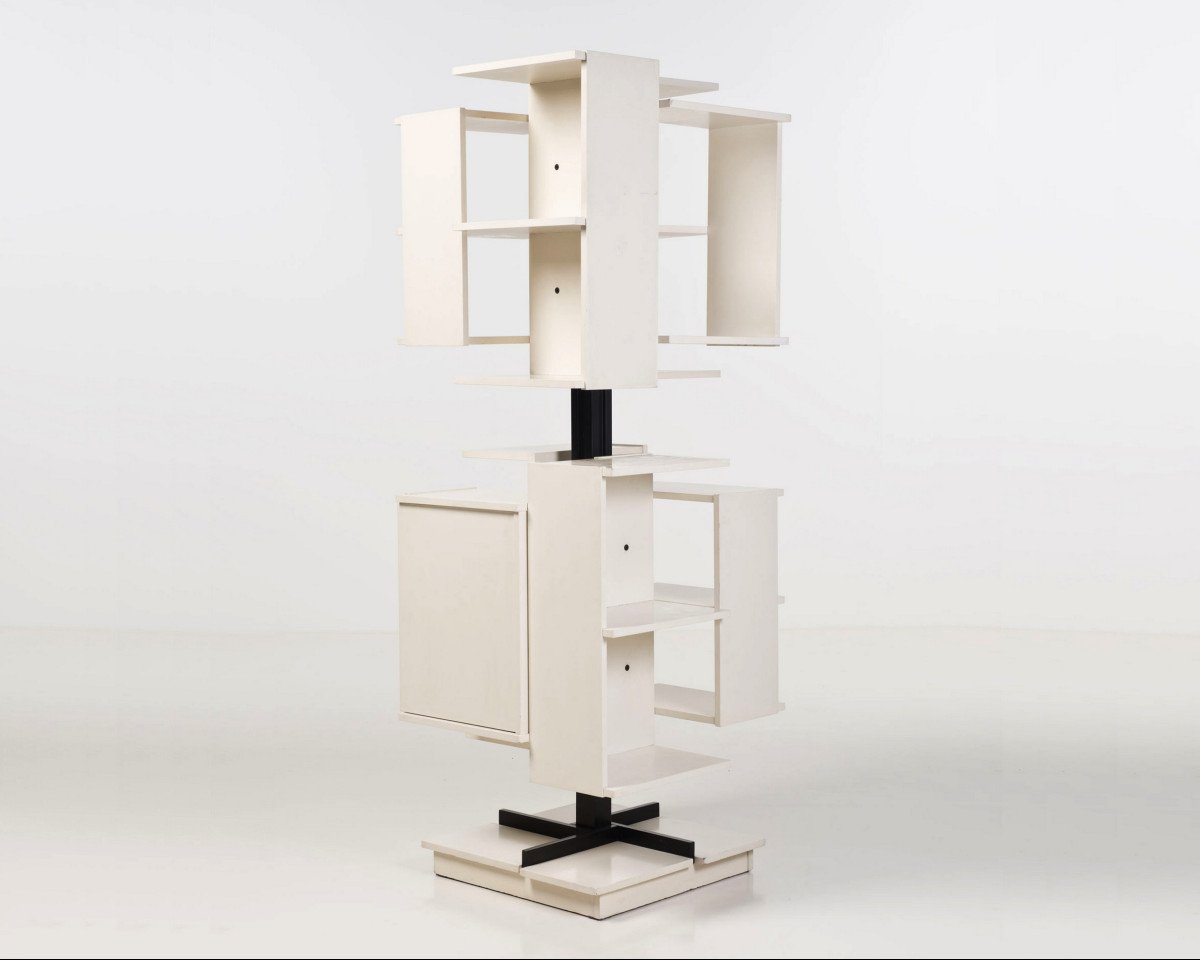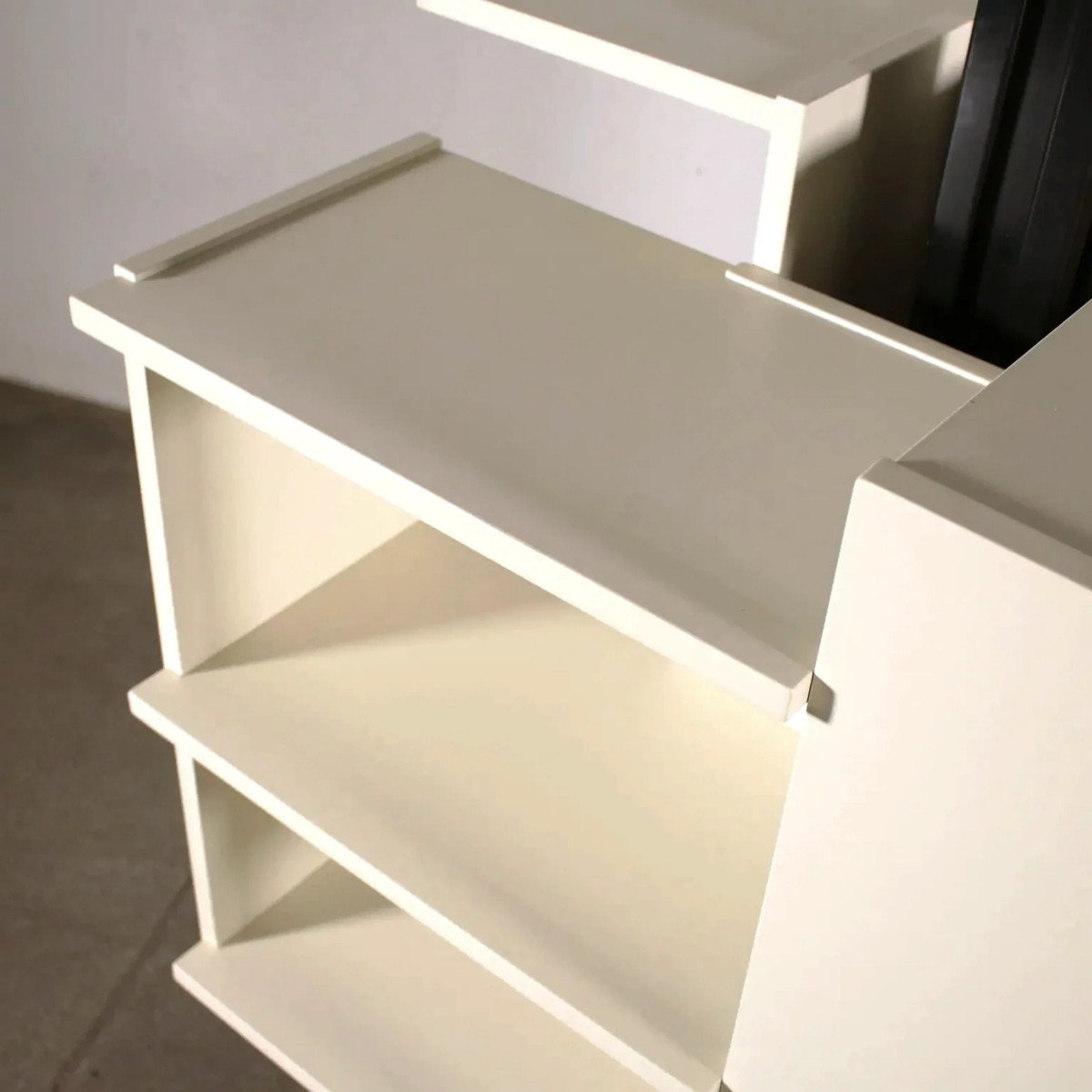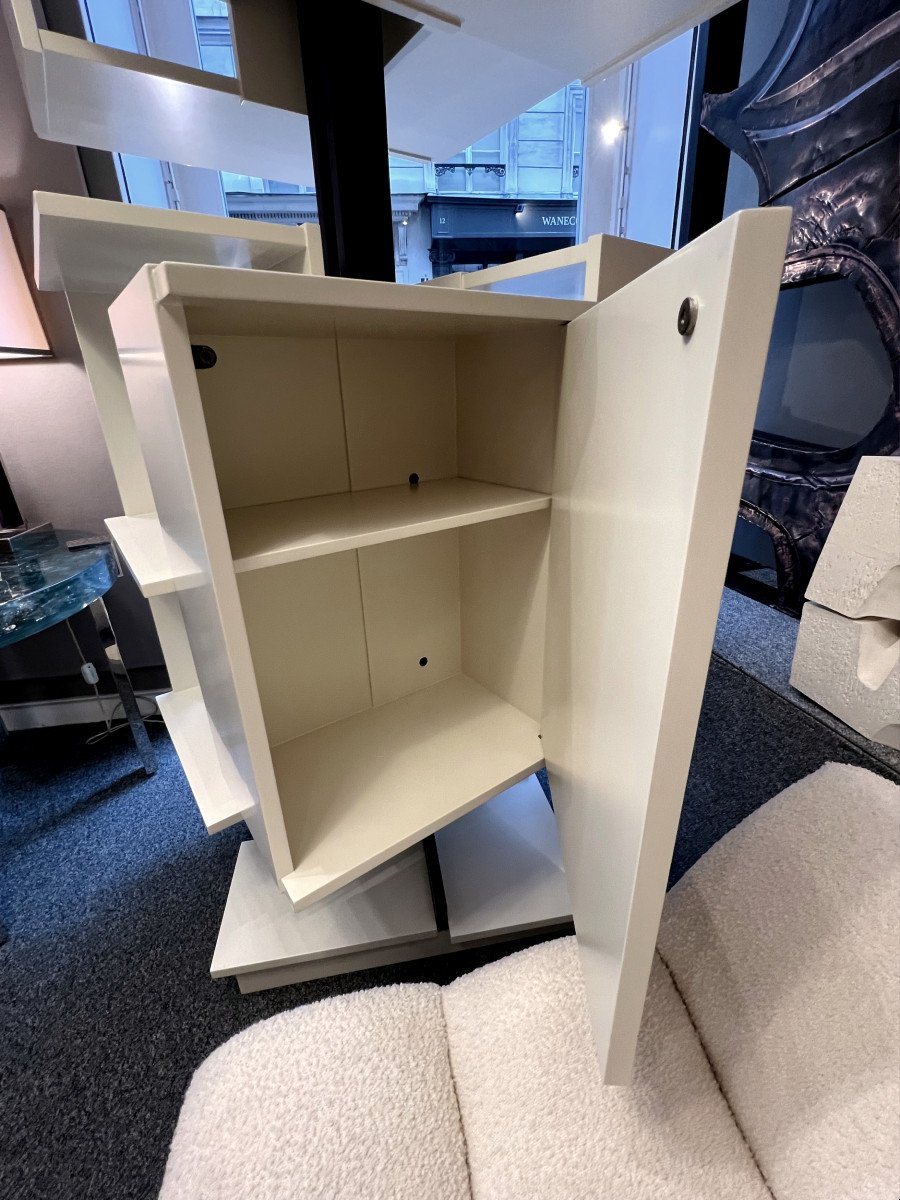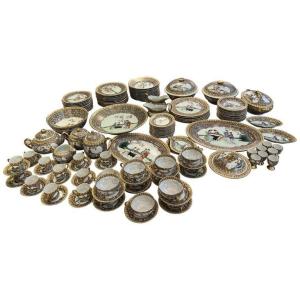Bibliography:
Il Soggiorno, coll. Lo dice l’Architetto, Ed. Görlich, Milan, ill. p. 27
G. Gramigna, « Repertorio Del Design Italiano 1950-2000, Per l’Arredamento Domestico, Vol. 1 »
Ed. Umberto Allemandi & C, Turin, 2003, model reproduced on p. 82
Biography
Claudio Salocchi (March 22, 1934 – December 7, 2012) was an Italian designer and architect.
Born in Milan in 1934, he graduated in architecture from the Politecnico di Milano. He taught Building Distribution at Milan’s Politecnico di Milano and Architectural Composition at Rome’s Valle Giulia La Sapienza Faculty.
In 1965, he opened his own design studio, and two years later began a long collaboration with Sormani, with whom he exhibited at the Salone Internazionale del Mobile that same year. That year, Salocchi presented the Ellisse collection for Sormani, which became the first company to experiment with extruded aluminum.
In 1973, he founded the « Doorty Research Center » with his friends and colleagues Ugo Carrega and Vincenzo Ferrari, with whom he exhibited in 1968 and 1973 at the 14th and 15th Milan Triennales, presenting the film Healthy Objects, Sick objects. In 1979, he won the Compasso d’Oro award for Metrosistema kitchen equipment for homes, produced by Alberti Cucine, also receiving two mentions for two other projects. In 1987, he was again mentioned in the XIV edition of the award.
A member of the Association pour les dessins et modèles industriels since 1967, he was vice-president from 1988 to 1990. 4] He has been curator and jury member of various design awards, including the prestigious Red Dot Design Awards in 2004 and 2006.
To know more, please click on this Wikipedia link
Story
Italian furniture pioneer Sormani was founded in 1961 in Arosio by designer Luigi Sormani (1932-2017). The company was an early advocate of modernized production techniques – rejecting the slow, traditional craft techniques and hardwoods so commonly used in the 1950s, in favor of new materials such as Rio rosewood (first imported by Sormani), lacquered wood, then plastic and aluminum in the 1960s and 1970s.
Sormani presented its first collection at the Milan Furniture Fair in 1961. This collection, known as Fleeting by Studio ABC, was one of the first modular cabinet systems. In 1966, Sormani began producing thermoformed objects, such as armchair shells, accessories and accent pieces, using molds (a technology derived from the automotive industry which, at the time, was only used for electric household appliances). The Nike and Auriga armchairs by Richard Neagle are prime examples. In the same year, Sormani was the first to experiment with extruded aluminum, with Claudio Salocchi’s Ellisse Collection (1967). During this period, Sormani also established and expanded into the American and Japanese markets, where success was immediate. In 1968, he began a collaboration with architect-designer Gio Ponti, which resulted in a range of colorful storage units.
In the early 1970s, Sormani continued to research and analyze the various possibilities offered by new materials. With the creation of an engineering division in the early 1980s, he carried out a number of turnkey projects, operating at all levels of engineering and residential and contract architecture, including the complete restoration and interior decoration of hotels, offices, banks, government buildings, universities, etc.
Over the years, Sormani has collaborated with many important Italian designers, including Joe Colombo, Gio Ponti, Carlo De Carli, Claudio Salocchi, Cesare Casati, Emanuele Ponzio, Nani Prina, Antonello Mosca, Fabrizio Cocchia, Gianni Songia, De Pas, D’Urbino, & Lomazzi, Studio A.R.D.I.T.I., Studio ABC (Achilli, Brigidini, Canella), Richard Neagle, and Pierre Cardin. Among his most notable projects were the GS 195 Daybed by Gianni Songia (1963), the DC 154 Dresser by Carlo De Carli (1963), the Rotoliving Unit by Joe Colombo (1969) for the 1972 MoMA exhibition Italy: The New Domestic Landscape, and the Ponte Floor Lamp by Studio A.R.D.I.T.I. and Gianni Gamberini (1971).
Sormani was acclaimed for his advertising campaign in 1970, and awarded various prizes including the Torchio d’Argento for best advertising campaign with the ATA advertising agency, the Mercurio d’oro for best company (both in 1971) and the Delfino d’oro premio Città di Sanremo in 1972.
Sormani’s work can be found in many famous museums around the world, including the Museum of Modern Art in New York and the National Museum of Modern Art in Kyoto.
Luigi Sormani died in 2017, aged 84, in Seveso, Monza Brianza.











































 Le Magazine de PROANTIC
Le Magazine de PROANTIC TRÉSORS Magazine
TRÉSORS Magazine Rivista Artiquariato
Rivista Artiquariato